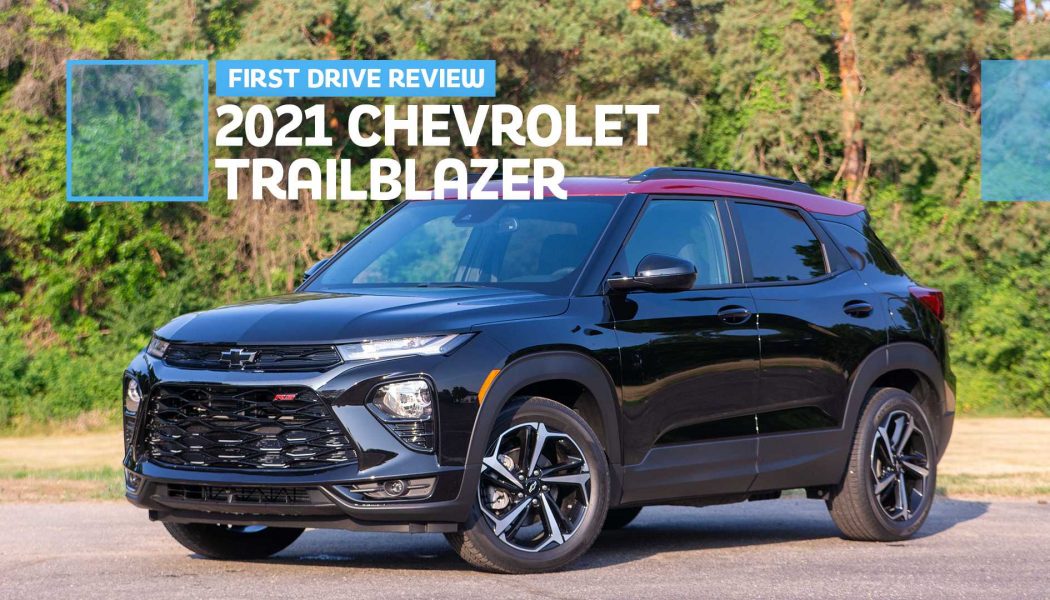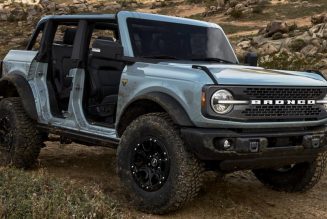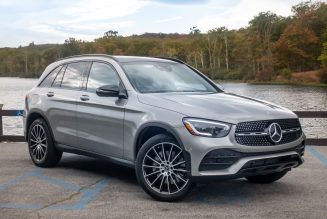“Trailblazer” doesn’t have to be a literal term. We talk about figurative trailblazers all the time, people or products that do things differently or break a glass ceiling. Although the 2021 Chevrolet Trailblazer may be an new product for the brand, it competes in an established segment, and both the marketing around our “Activ” trim level tester and the history behind the Trailblazer name suggest Chevrolet meant the literal definition. Let’s put it to the test, then.
The original Trailblazer (and the Trailblazer trim level for the compact S-10 Blazer that preceded it) was a truck-based, body-on-frame SUV with proper four-wheel drive and a six- or eight-cylinder engine. The all-new model is a car-based, unibody crossover with two different turbocharged three-cylinder engines and manually selectable all-wheel drive.
Our off-road-focused Activ trim level tester gets a minor suspension lift, some underbody shielding, a revised front bumper for better clearance, and “sport terrain” tires. Never heard of a “sport terrain” tire? It’s an all-season tire with aggressive-looking sidewalls that may or may not improve traction slightly in deep mud, sand, or snow. Technically, these tires are Hankook Dynapro AT2 all-terrains, but in a new configuration with considerably less aggressive tread likely optimized for on-road noise and comfort.
Lest you think the new Trailblazer is lacking in off-road cred, consider this: The old Trailblazer had 7.8 inches of ground clearance. The new Trailblazer has between 7.0 and 8.0 inches of clearance. The Activ trim, in particular, gets a slight bump in ground clearance, but only if you spec it with all-wheel drive. Doing so gets you an extra half-inch of daylight under the vehicle (base models have 7.0 inches, most other trims have 7.5, and Activ AWD gets 8.0).
What’s more, the new Trailblazer rides on a 9.1-inch-shorter wheelbase, so although Chevy hasn’t released approach, breakover, or departure angles on it yet, simple math tells you the new one has a way better breakover angle. Comparing the old and new models side by side suggests the new one has a better departure angle, too, thanks to its short rear overhang, but the old truck likely has a better approach angle (low noses are better for aerodynamics and thus fuel economy, something Chevy cared less about in 2001 when it released the last Trailblazer).
Chevy also changes the damper tuning on Activ models to fit their off-road orientation. It’s supposed to make the vehicle ride better on dirt and gravel roads, but we didn’t have another trim level to compare it to. Mostly, we just thought it made the car ride stiffer than it needed to on the street.
Time to answer the big question, though: Can this thing blaze a trail? The short answer won’t surprise you: Not really.
To test it, we started off easy on an occasionally maintained dirt road. Whatever they’re doing on the street, the dampers work well on rougher surfaces. The Trailblazer rode pretty well on the bumpy road, though you hear a lot of noise from the tires on-road or off. The “sport terrain” tires gripped well enough to keep the car from sliding around on the dirt when driven normally.
Now, for a challenge. There are two surefire ways to lose grip off-road: steep hills and getting wheels off the ground on big bumps. We started with a good, steep hill, and as you’d expect, the front wheels spun and scraped at the dirt for traction without really going anywhere. Whoops! Didn’t turn all-wheel drive on. Unlike nearly every other car company on earth, Chevrolet’s parent GM forces you to turn on all-wheel drive manually in its crossovers rather than doing it automatically when a wheel slips. Instead, you get a message suggesting you turn on all-wheel drive while the front wheels dig a hole. Why? Because the EPA tests a vehicle in its default mode, and front-wheel drive is more fuel efficient than all-wheel drive.
OK, all-wheel drive is on. Let’s try this again. With power going to the rear wheels finally, it’s a whole different situation. Chevy hasn’t published the maximum torque split front to rear, but it’s almost certainly not more than 50/50. Whatever it is, it’s enough. Even on a steep slope, facing uphill or down, the Trailblazer digs right in and goes with barely a scratch at the dirt. Now we’re getting somewhere.
We’ve found the Trailblazer can handle loose surfaces, but that’s just step one in off-roading. The real challenge is the obstacles you’ll come across out on the trail. From deep holes and ruts to rocks and logs, off-roading requires clearance and the ability to send power to the wheels with traction. Already, we see a problem. Chevy knows most people won’t take this on any road worse than dirt or a gravel stretch, so it’s designed for aerodynamics and fuel economy. There’s a reason the front bumper on a Jeep is so high. Although the Trailblazer’s ground clearance is pretty decent, even with the Activ’s unique front bumper the approach angle still isn’t great. All this to say you’re not going to be driving over very large rocks or logs or into deep holes or ruts without dragging the nose. The road down to your favorite fishing spot hasn’t been graded yet this year? No big. Blazing a trail? Not so much.
Fine, but off-roading isn’t just about rock crawling. What about those situations where the road is full of holes and you end up getting one or two wheels off the ground? No, the Trailblazer isn’t good at those, either. There’s two ways to handle those situations: articulation and differential locks, and the Trailblazer doesn’t have either. The wheels don’t have a lot of travel, so they can’t drop down into holes to maintain contact with the ground. Chevrolet’s ability to package a torsion beam, a rear differential, and a Watt’s link under the rear of the car is impressive, but torsion beams are pretty useless off-road.
One wheel in a hole is no problem, as the other three have plenty of grip. Two wheels? Especially at opposite corners of the vehicle? Bad news. The Trailblazer has open differentials front and rear, so any time a wheel loses traction it spins like crazy while the wheel on the other side of the axle goes nowhere. If just one of the four wheels is doing that, the other axle can pull the vehicle out. If a wheel on each axle is in the air or just plain loses traction, you’re in trouble. Some vehicles solve this problem by using the brakes to stop the loose wheels from spinning and force the wheels with traction to turn. The Trailblazer kind of does that, but half-heartedly at best. When we got in these situations, fluctuating the gas and letting the vehicle rock a bit eventually got it free with a bit of help from the brakes, but more from plain old momentum.
So no, the new Trailblazer can’t blaze a trail. The all-wheel-drive system is clearly meant as a traction aid in bad weather, shallow mud, dirt, gravel, and sand. With its open differentials, it’s not going to get you over or through tougher obstacles even if the nose will clear them. The Trailblazer Activ is, as its name suggests, targeted at people with an “active lifestyle” in marketing speak who go to state parks and such where the ability to carry gear and not get stuck in the mud is all you really need. If your vacation itinerary includes an OHV trail, bring something else.









